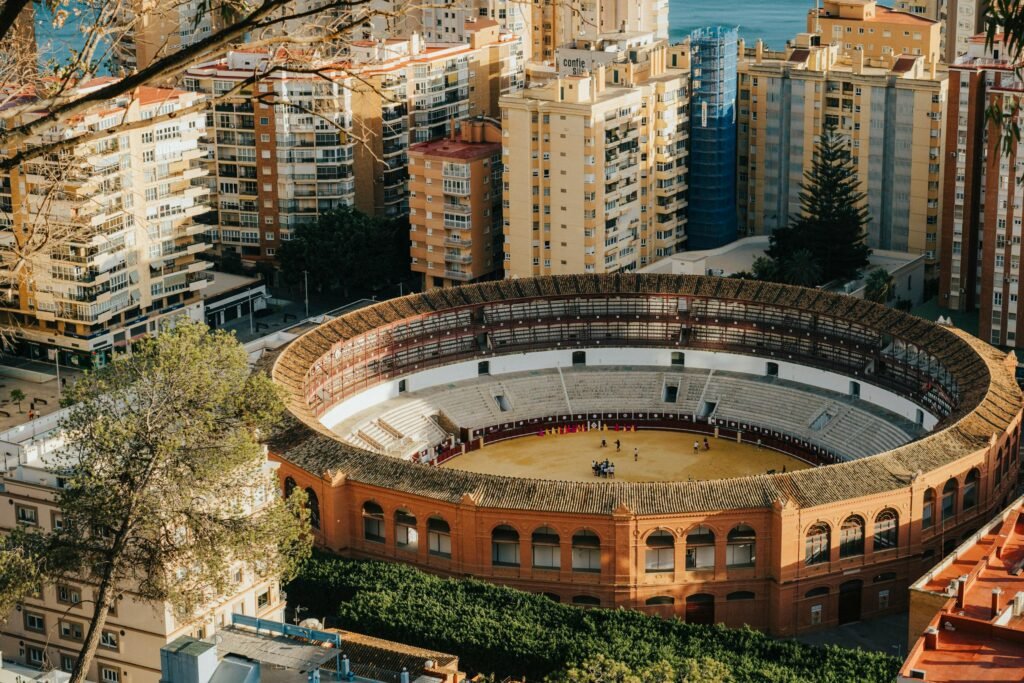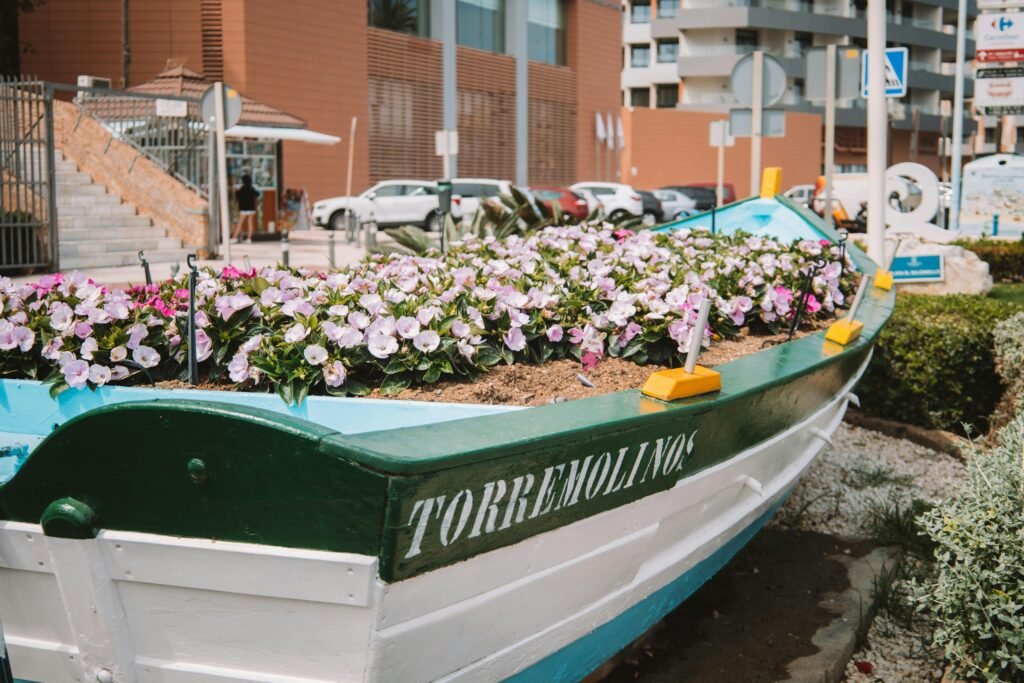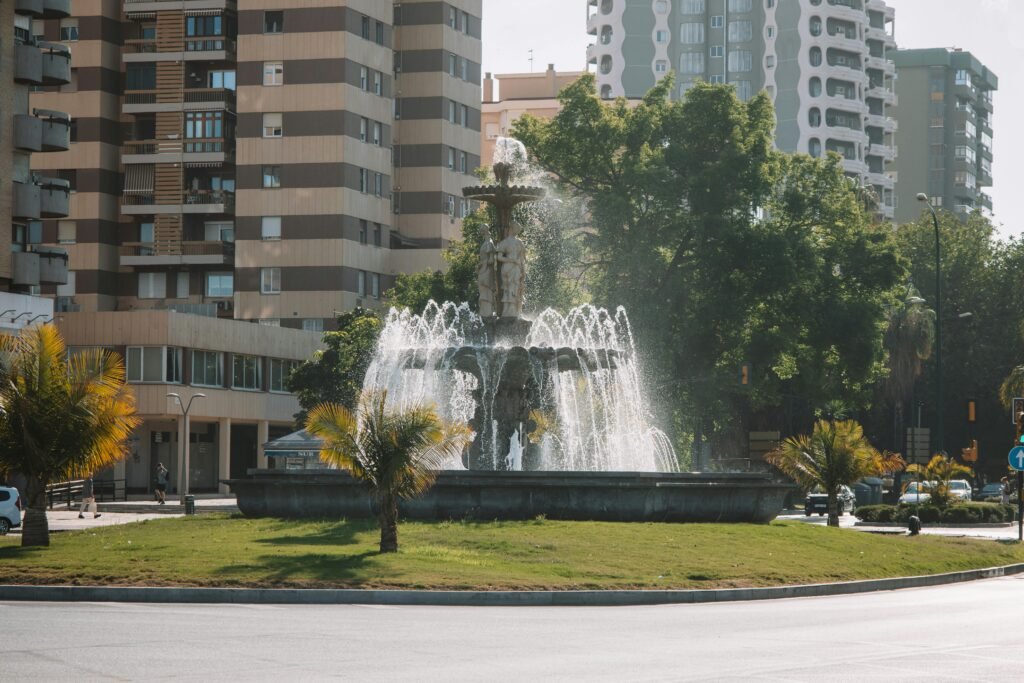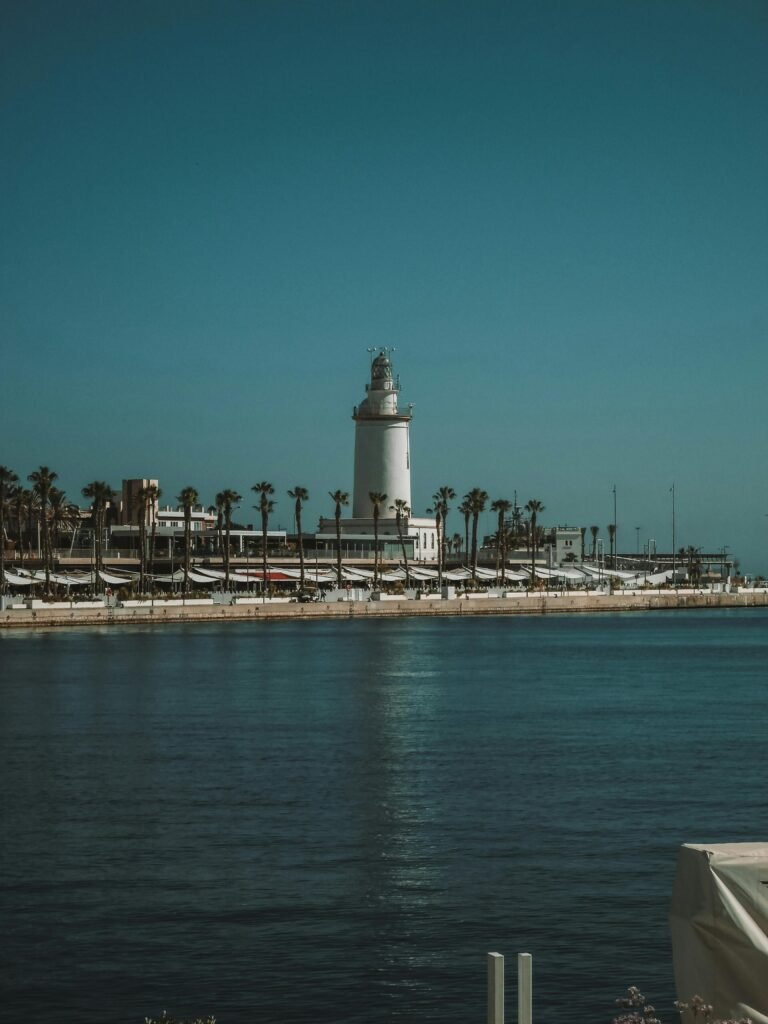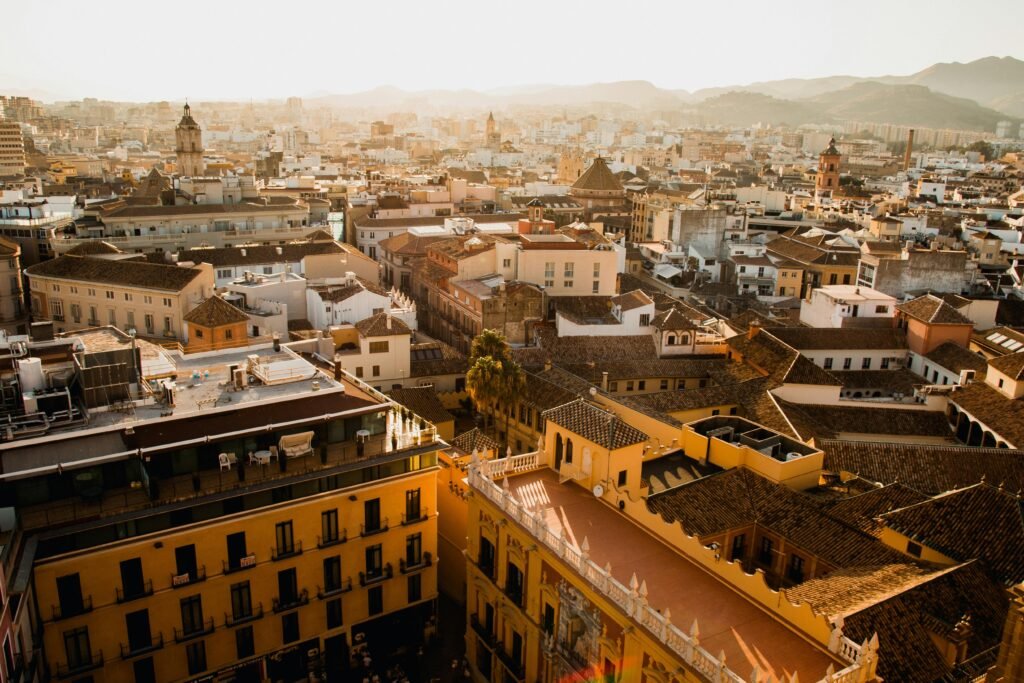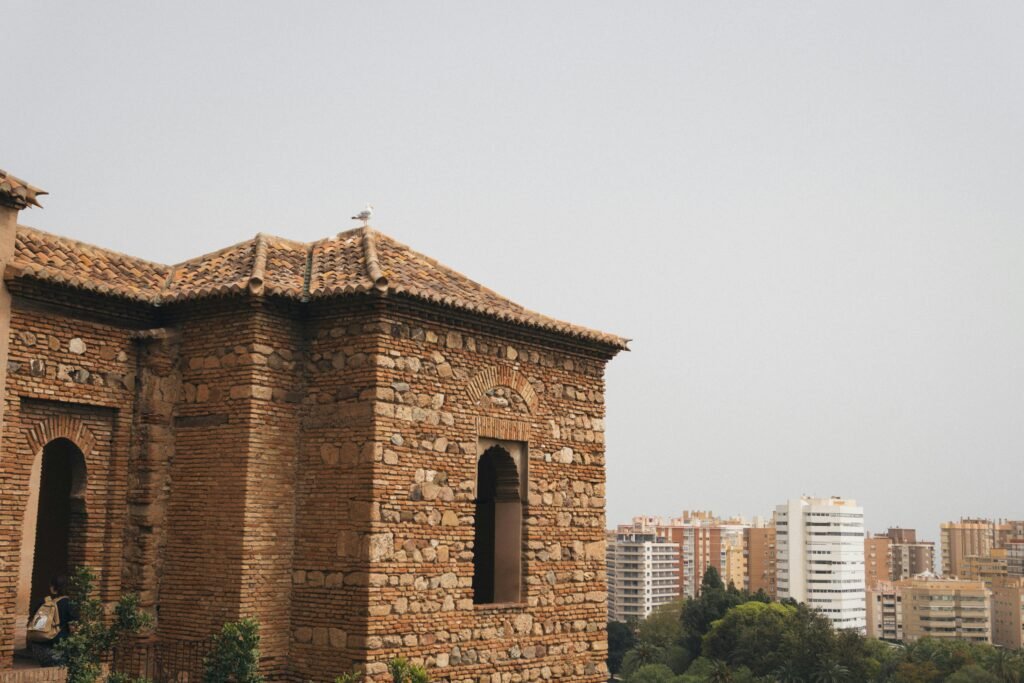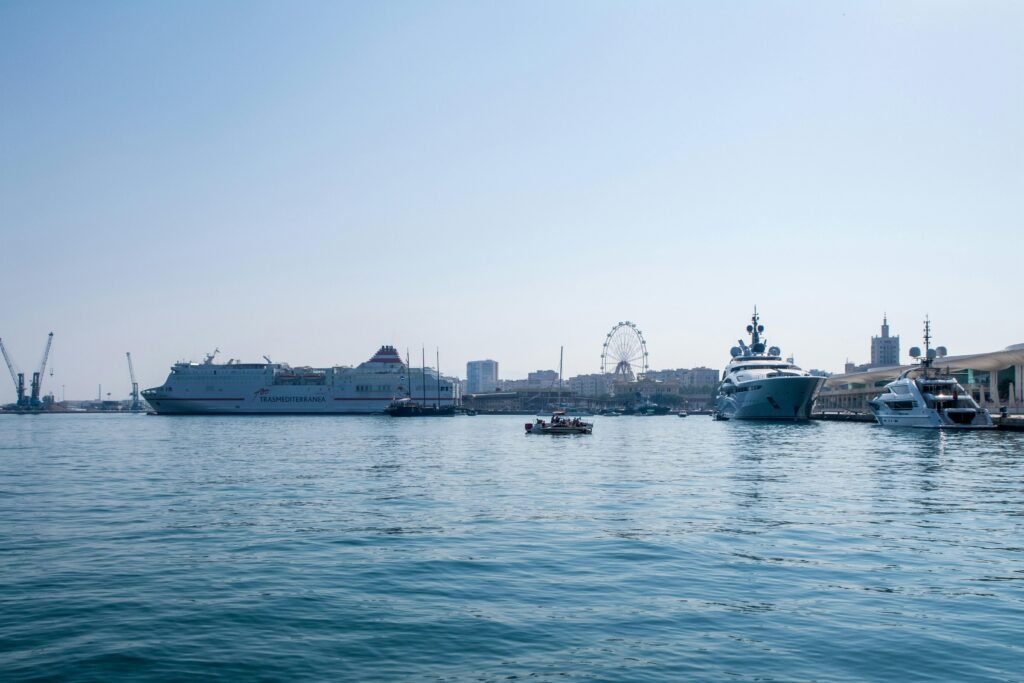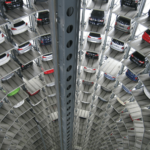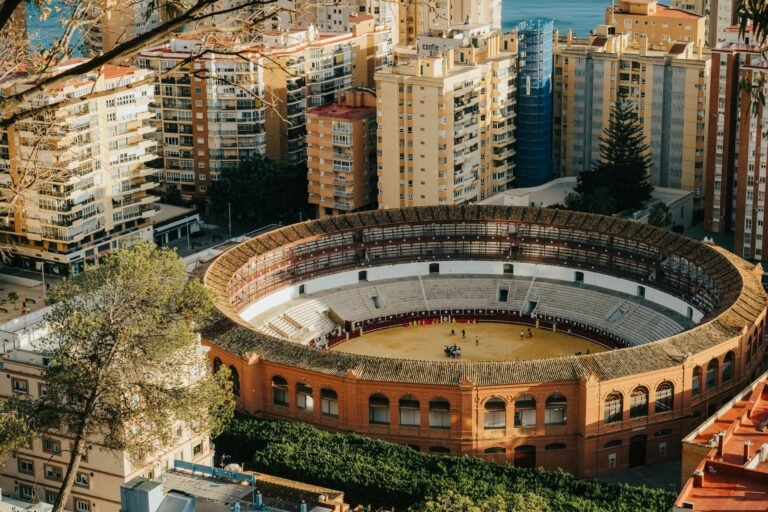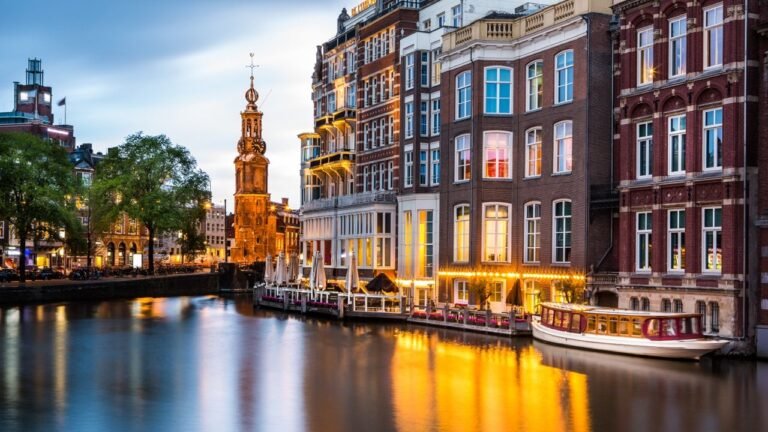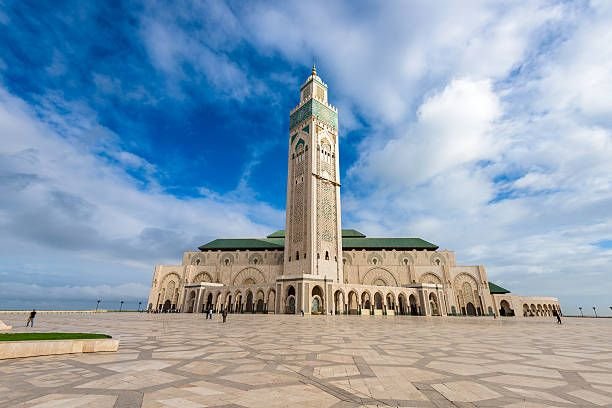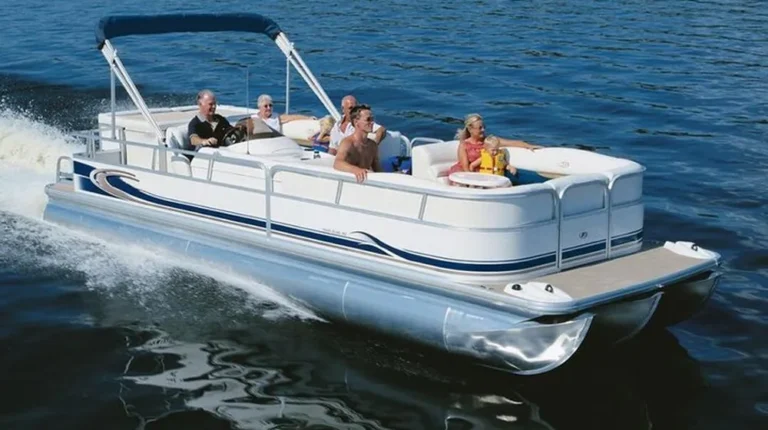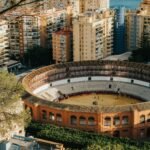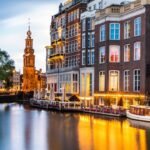The cultural significance of the museum extends beyond its extensive collection. By highlighting Picasso’s works, ranging from paintings and sculptures to ceramics and engravings, it offers a rare glimpse into the evolution of his artistic mastery. The museum plays a pivotal role in preserving Picasso’s heritage and serves as a cultural center that inspires and educates visitors through exhibitions, workshops, and cultural activities. This dedication to Picasso’s art emphasizes his profound connection to Málaga, his birthplace, reflecting the deep pride the city holds for one of its most distinguished sons.
Picasso’s influence on modern art cannot be overstated; his creativity redefined artistic boundaries and movements such as Cubism and Surrealism. The museum stands as a vital bridge connecting Málaga’s historical past with its modern identity, offering a place for art enthusiasts to immerse themselves in the genius of one of history’s greatest artists. In essence, Museo Picasso Málaga is not just a museum; it is a tribute to the life and vision of an artist who continues to shape the art world.
Location and How to Get There
The Museo Picasso Málaga is situated at the heart of Málaga, at the historic Palacio de Buenavista, located on Calle San Agustín, 8, 29015 Málaga, Spain. The palace itself is a remarkable piece of architecture, showcasing a blend of Renaissance and Mudéjar influences, reflective of Andalucía’s diverse cultural heritage. Constructed in the 16th century, this elegant building was declared a national monument and restored to house Picasso’s masterpieces. Its stunning courtyard, marble columns, and coffered ceilings combine traditional Andalusian charm with modern gallery spaces, creating a perfect setting for appreciating the works of one of Málaga’s most illustrious sons.
Directions and Transportation Options
For visitors traveling by public transport, reaching the museum is convenient. Buses are a practical choice, with several lines such as Lines 1, 4, 19, and 37 stopping near the museum. If you prefer taking the train, the Cercanías Málaga lines connect many parts of the city, with a stop at Málaga-Centro Alameda Station, which is within walking distance of the museum.
For those driving to the museum, there are various parking options available nearby. The closest parking facilities include Parking Plaza de la Marina and Parking Alcazaba, both of which are only a short walk away from the museum. Walking through the charming streets of Málaga’s old town adds to the experience of visiting this artistic hub.
Alternatively, visitors can also walk to the museum, especially if they are staying within the city center, as it is conveniently located within walking distance of other notable landmarks like the Málaga Cathedral and the Alcazaba fortress. This central location makes Museo Picasso Málaga easily accessible, whether you are exploring the city on foot, by car, or using public transport.
Recommended Visit Duration and Visitor Tips
Why the Recommended Visit Duration is 1-3 Hours
A visit to Museo Picasso Málaga typically takes 1-3 hours, making it ideal for art enthusiasts and casual visitors alike. This recommended timeframe allows for a comprehensive exploration of the museum’s extensive collection, including over 200 works by Pablo Picasso, spanning various stages of his artistic career. The museum’s exhibits are thoughtfully arranged, guiding visitors through Picasso’s evolution as an artist, from his early works to his later, more experimental pieces. Spending 1-3 hours ensures that you can fully appreciate the nuances and historical context behind each artwork while taking in the architectural beauty of the Palacio de Buenavista itself.
The duration also accounts for temporary exhibits and special installations that the museum regularly hosts. With ample time, visitors can move at their own pace, enjoying the paintings, sculptures, drawings, and ceramics without feeling rushed. This timeframe strikes a balance between experiencing the collection deeply and avoiding fatigue, making it an enriching yet manageable visit.
Tips for Maximizing Your Visit
- Plan Your Visit During Off-Peak Hours: For a more relaxed experience with fewer crowds, consider visiting during weekday mornings. Late afternoons can also offer quieter times, especially on weekdays.
- Pre-Book Your Tickets Online: Opting for electronic tickets not only saves time but also avoids long queues at the entrance.
- Join a Guided Tour: To gain a deeper understanding of Picasso’s works and life, consider joining a guided tour offered by the museum. Knowledgeable guides provide valuable context and fascinating insights.
- Use the Museum’s Audioguide: If you prefer exploring at your own pace, the museum’s audioguide offers detailed information about each exhibit, enhancing your appreciation of the artworks.
- Wear Comfortable Shoes: With multiple exhibition halls and courtyards to explore, comfortable footwear is essential for an enjoyable visit.
- Check for Special Exhibits: The museum frequently hosts special exhibitions. Checking the schedule in advance allows you to plan around unique showcases or events.
- Take Breaks as Needed: The museum has rest areas and a lovely on-site restaurant. Taking breaks during your visit can keep your energy levels up and allow for a more pleasant experience.
- Morning visits (especially weekdays) for quieter exploration.
- Late afternoon tends to have a more relaxed pace.
- Avoid weekends if you prefer a less crowded environment.
Art and Exhibits You Shouldn’t Miss
Overview of Key Permanent and Temporary Exhibits on Display
The Museo Picasso Málaga boasts a rich collection of permanent exhibits that offers a captivating journey through the life and creative genius of Pablo Picasso. With over 200 works, the permanent collection spans multiple mediums, including paintings, drawings, sculptures, and ceramics. Visitors can witness Picasso’s artistic evolution, from his early academic works to the groundbreaking Cubist pieces and later more expressive styles. This collection serves as a comprehensive showcase of Picasso’s unique ability to redefine artistic norms and his versatility as an artist.
Temporary exhibits complement the museum’s permanent collection by showcasing diverse themes, artists, or movements relevant to Picasso’s work. These rotating exhibitions often provide context by comparing Picasso’s influence on contemporary art and artists or exploring specific facets of his artistic journey in depth. Visitors are encouraged to check the museum’s schedule for upcoming temporary exhibits to make their experience even more enriching.
Special Highlights of Notable Works and Their Significance
- “Mother and Child” (1921) This tender depiction of a mother and child highlights Picasso’s ability to portray deep emotions with simplicity. Created during his Neoclassical period, this piece reflects a shift from his earlier Cubist experimentation to more human and relatable themes. Its warmth and intimacy make it a standout piece for many visitors.
- “Acrobat” (1930) One of the museum’s captivating pieces, this artwork exemplifies Picasso’s fascination with circus performers and movement. The distorted, fluid shapes mark his exploration of Surrealist influences and showcase the dynamic and flexible boundaries of his style.
- Ceramic Works Picasso’s ceramics offer insight into his playful and experimental spirit. He transformed everyday objects into works of art, demonstrating a mastery of form and a love for reinvention. The collection on display at Museo Picasso Málaga exemplifies his innovative approach to ceramics, breaking away from traditional boundaries.
- “Bust of a Woman” (1931) This striking sculpture embodies Picasso’s Cubist techniques, merging multiple perspectives into a single work. The piece challenges conventional representation, emphasizing form and abstraction. It stands as a testament to Picasso’s role in redefining modern sculpture.
- “Portrait of Lola, Picasso’s Sister” Created during his teenage years, this portrait captures Picasso’s technical skill and early talent. It stands as a poignant reminder of the young artist’s beginnings and his connection to Málaga.
- Sketches and Drawings The museum features a range of sketches that provide a window into Picasso’s creative process. These pieces reveal his thought process, experimentation, and rapid ideation, offering visitors a closer look at how some of his iconic masterpieces came to life.
Significance of the Collection
Each piece in the museum reflects Picasso’s ever-evolving vision and groundbreaking approach to art. Visitors gain insight into his influence on 20th-century art and his ability to transcend and reshape artistic conventions. The diverse collection serves not only as a homage to Picasso’s roots in Málaga but also as a beacon of innovation and creativity for generations to come.
Ticket Information: Everything You Need to Know
Detailed Ticket Options Available
Visitors to the Museo Picasso Málaga can choose from a variety of ticket options, catering to different age groups and needs:
- Adult Ticket: Available to individuals aged 17-64 years, this ticket grants access to the museum’s permanent and temporary exhibitions. It is a popular choice, with over 200 reservations recently recorded, underscoring the museum’s appeal to both locals and tourists.
- Senior Ticket: This option is for visitors 65 years and older. Seniors can enjoy the full range of museum exhibits with a discounted ticket rate. The museum recognizes the importance of making its collection accessible to everyone, particularly to older art enthusiasts, who often appreciate Picasso’s work with unique historical context.
- Child Ticket: This ticket applies to children aged 16 years and under. To ensure a safe and enjoyable experience for younger visitors, children’s tickets must be purchased alongside at least one adult ticket. This policy encourages family visits and makes it easier for parents and guardians to introduce children to Picasso’s works. Availability Note: Child tickets become available for use starting from November 10.
- Family Tickets (1 Adult + 1 Child): The museum also offers a family ticket option, suitable for one adult (aged 17-64 years) accompanied by one child (aged 0-16 years). This ticket type is designed to foster family visits, making it easier to explore Picasso’s legacy together in a supportive and educational environment.
Explanation of Electronic Ticketing, Non-Refundable Policy, and Availability
Electronic Ticketing is available for all ticket options, providing a seamless and convenient way for visitors to gain entry. E-tickets eliminate the need for physical tickets, reducing wait times and simplifying the entry process. Once purchased, tickets can be displayed directly from a mobile device or printed out for scanning at the entrance. This user-friendly system allows for quicker access, enhancing the overall visitor experience. It is important to note that all tickets to Museo Picasso Málaga are non-refundable. This policy is in place to manage visitor capacity and ensure that those with confirmed tickets can enjoy the museum’s offerings as planned. While refunds are not available, tickets can be rescheduled in case of changes, subject to the museum’s terms and availability.
Availability for tickets can vary, with high demand during peak seasons or special exhibitions. Visitors are encouraged to book tickets in advance to secure their spot and avoid disappointment. This approach guarantees access to both the permanent and temporary exhibits, making it easier to plan a memorable visit to this iconic museum.
Family-Friendly Features and Accessibility
Child Ticket Policies and Family Ticket Combinations
Museo Picasso Málaga is designed to be a welcoming destination for families, ensuring that visitors of all ages can enjoy the museum’s extensive collection. The child ticket policy is structured to encourage family visits, with tickets available for children aged 16 years and under. To maintain safety and provide the best experience, child tickets must be purchased in combination with at least one adult ticket. This policy ensures that children have appropriate supervision while exploring the museum.
Family tickets are available to make the visit even more convenient and affordable. This option is suitable for 1 adult (aged 17-64 years) accompanied by 1 child (aged 0-16 years). The family ticket helps simplify the ticketing process and offers families a chance to explore together without separate individual tickets. These thoughtfully designed ticket policies reflect the museum’s commitment to providing an engaging, family-friendly atmosphere where children and parents alike can immerse themselves in the world of Picasso.
Amenities Available for Families
To ensure a comfortable and enjoyable visit, Museo Picasso Málaga offers various amenities for families:
- Wi-Fi Access: Free Wi-Fi is available throughout the museum, making it easy to stay connected, access museum guides, or share your experience online in real time. This feature can be especially useful for parents who want to enhance their children’s learning experience with digital content or stay connected during their visit.
- Restrooms: The museum is equipped with modern restrooms, which are conveniently located and easily accessible. Clean facilities help make longer visits more manageable for families, particularly those with young children.
- On-Site Restaurant: The museum features a restaurant where visitors can take a break, enjoy a meal, or grab a quick snack. The restaurant offers a variety of dishes, catering to different tastes and dietary preferences. This convenient amenity allows families to pause and recharge before continuing their exploration of the museum’s art collection.
Special Services and Visitor Facilities
Overview of On-Site Facilities
Museo Picasso Málaga offers a range of on-site facilities designed to make the visitor experience comfortable and convenient, whether you are visiting alone or with family:
- Wi-Fi: Visitors can enjoy complimentary Wi-Fi access throughout the museum. This service allows guests to enhance their experience by accessing digital guides, sharing their favorite exhibits in real-time, or staying connected with friends and family. Wi-Fi access is particularly beneficial for those who prefer interactive and multimedia-enhanced tours.
- Restrooms: Modern and well-maintained restrooms are available for all guests. These facilities are strategically located to ensure ease of access during your visit, making it more comfortable for families with children, seniors, or anyone planning an extended stay at the museum.
- Museum Restaurant: For those who wish to take a break or enjoy a meal during their visit, the museum’s on-site restaurant offers a variety of dining options. Guests can savor local and international cuisine in a relaxed atmosphere, with dishes suited to different dietary needs and preferences. The restaurant is a perfect spot to pause, reflect on the artworks, and recharge before exploring more exhibits.
Accessibility Features for Visitors with Mobility Issues
Museo Picasso Málaga is committed to providing an inclusive and accessible environment for all visitors, including those with mobility challenges:
- Wheelchair Accessibility: The museum’s entrance and exhibition areas are fully wheelchair-accessible, with ramps and elevators available to ensure smooth movement between different levels of the museum. This makes it easier for visitors with mobility issues to enjoy the entire collection without limitations.
- Accessible Restrooms: Restrooms designed for visitors with disabilities are available and easily accessible from all major exhibit areas. These facilities are thoughtfully equipped to ensure comfort and ease of use for everyone.
- Seating Areas: Throughout the museum, strategically placed seating areas provide resting spots for those who may need to pause and relax during their visit. This is especially helpful for visitors with mobility concerns or for older guests.
- Staff Assistance: The museum staff is trained and readily available to assist visitors with any specific needs, ensuring a seamless and enjoyable experience for everyone. Whether it’s help navigating the exhibits or using facilities, support is just a request away.
Visiting Rules and Guidelines
Important Rules and Guidelines Visitors Need to Follow
To ensure that everyone has a safe and enriching experience, Museo Picasso Málaga has established several key rules and guidelines. Visitors are encouraged to respect these rules to preserve the integrity of the artworks and maintain a pleasant environment for all:
- Respectful Behavior: All guests are expected to behave respectfully and quietly within the museum premises. Speaking in hushed tones is appreciated to maintain a serene atmosphere conducive to art appreciation.
- Do Not Touch the Artworks: Visitors are strictly prohibited from touching any of the artworks. This policy is in place to protect the delicate and irreplaceable pieces on display. Security personnel are present to enforce this rule and assist with any questions.
- Maintain a Safe Distance: Maintaining a reasonable distance from exhibits is essential to prevent accidental damage. Many pieces are displayed with barriers or clear guidelines to help visitors gauge appropriate proximity.
Policies on Photography, Food, and Security Measures
- Photography: The museum has a strict policy regarding photography to protect the artworks and ensure a distraction-free experience for all visitors. Flash photography and the use of tripods or selfie sticks are not permitted under any circumstances. In designated areas, non-flash photography may be allowed, but it is best to check with museum staff for current guidelines.
- Food and Drink: For the preservation of the museum’s artworks and the cleanliness of the exhibit spaces, food and drinks are not allowed within the exhibition areas. Visitors are welcome to use the museum’s restaurant for meals and snacks, where food and beverages can be enjoyed in a comfortable setting.
- Bags and Luggage: Large bags, backpacks, and luggage are not permitted in the exhibition areas. The museum provides lockers for visitors to securely store their items during their visit. This measure is taken to prevent any potential damage to artworks and to ease the flow of movement throughout the gallery spaces.
- Security Checks: For the safety and security of all visitors and the museum’s collections, security checks are conducted upon entry. Guests may be asked to open bags or undergo a screening process before accessing the exhibition areas. The security team is trained to make this process as smooth and quick as possible while maintaining safety standards.
Why Museo Picasso Málaga is a Must-Visit for Art Lovers
Why Art Enthusiasts and Culture Buffs Find This Museum a Key Destination
Museo Picasso Málaga is a must-visit destination for art lovers and culture enthusiasts due to its unique collection and deep connection to one of the most influential artists of the 20th century, Pablo Picasso. The museum is not just a place to view artworks but also an opportunity to experience the rich history of Picasso’s life and artistic evolution.
- A Deep Dive into Picasso’s Legacy: As Picasso’s birthplace, Málaga offers a particularly meaningful setting for this museum, which features over 200 works spanning a range of media including paintings, sculptures, ceramics, and sketches. The museum’s collection provides insight into his creative process, reflecting both his early influences and the dramatic shifts in his style. Art enthusiasts appreciate the diversity of pieces, showcasing the wide-ranging phases of Picasso’s career, from his early academic works to his later, more abstract pieces.
- Special Exhibitions and Curated Displays: In addition to its permanent collection, the museum frequently hosts temporary exhibitions that focus on various aspects of Picasso’s life or explore the work of other significant artists. These exhibitions provide context for Picasso’s works, helping visitors to understand his impact on modern and contemporary art. Art lovers often find these rotating exhibits a compelling reason to return to the museum.
- Connection to the Local Culture: The museum is housed in the Palacio de Buenavista, a beautiful 16th-century building that itself is a testament to Málaga’s rich architectural heritage. The museum’s blend of art and history offers a cultural experience that extends beyond Picasso’s works, making it a key destination for those interested in Spanish and Andalusian culture.
- Educational Programs and Workshops: For art lovers who want a deeper engagement, the museum provides various educational programs, including guided tours, workshops, and lectures. These programs are designed to educate visitors about Picasso’s techniques, his approach to art, and the cultural context of his work, making the museum an invaluable resource for those eager to learn more.
Testimonials or Examples of Positive Visitor Experiences
Visitors from around the world consistently highlight their experiences at Museo Picasso Málaga as both educational and inspiring. Many art enthusiasts describe how the museum offers a personal connection to Picasso, something that cannot be fully replicated by simply viewing his works elsewhere. Here are a few insights shared by previous visitors:
- An Art Enthusiast from London: “As an art lover, visiting the Museo Picasso Málaga was a dream come true. The museum’s collection beautifully captures the full scope of Picasso’s genius, from his early, more traditional works to his revolutionary modern pieces. I was particularly struck by the depth of his experimentation with form and color. This museum is a must-visit for anyone who truly appreciates art history.”
- A Cultural Traveler from New York: “What makes this museum so special is not just the art, but the setting. The museum’s location in Picasso’s hometown, Málaga, adds an emotional depth to the visit. The blend of old and new—modern art within a historic building—creates a unique atmosphere. I loved how the museum provides not just works of art but also context about Picasso’s life and times.”
- A Family Visitor from Madrid: “We took our children to the museum, and they loved it! The exhibits were engaging, and the museum had family-friendly amenities, which made our visit more enjoyable. Picasso’s works come to life through interactive exhibits and educational programs. It was an enriching experience for all of us, and we left feeling inspired.”
Additional Tips for a Great Experience
Suggestions for Pairing a Museum Visit with Other Attractions in Málaga
Visiting Museo Picasso Málaga is just one of the many cultural treasures you can explore in this vibrant Andalusian city. To make the most of your day, consider pairing your museum visit with other nearby attractions that highlight the rich history and beauty of Málaga:
- Alcazaba of Málaga: After immersing yourself in Picasso’s world, step back in time with a visit to the Alcazaba, a stunning Moorish fortress that overlooks the city. Only a short walk from the museum, the Alcazaba offers panoramic views of Málaga and provides insight into the city’s Islamic past. The fortress is well-preserved, with beautiful gardens and historical exhibits, making it a great complement to your cultural journey.
- Castillo de Gibralfaro: For even more spectacular views, head up to the Castillo de Gibralfaro, perched on a hilltop above the Alcazaba. This castle dates back to the 14th century and offers breathtaking vistas of Málaga’s coastline and the Mediterranean Sea. It’s a wonderful way to enjoy the city’s history from a different perspective.
- Catedral de Málaga: Just a short walk from the Picasso Museum, the Málaga Cathedral is an architectural marvel that should not be missed. Known as ‘La Manquita’ due to its unfinished tower, the cathedral combines Renaissance and Baroque styles, with a beautiful interior and impressive artwork.
- Roman Theatre: Located right next to the Alcazaba, the Roman Theatre is one of Málaga’s most significant archaeological sites. Dating back to the 1st century BC, this well-preserved theatre is an excellent way to explore Málaga’s Roman history, adding another layer of cultural depth to your visit.
- Centre Pompidou Málaga: For contemporary art lovers, the Centre Pompidou Málaga offers a stark contrast to the classical works of Picasso. Located by the waterfront, this museum showcases rotating exhibitions of modern art, often featuring major international artists. It’s another fantastic spot to immerse yourself in Málaga’s dynamic cultural scene.
Insider Advice on Dining Nearby or Nearby Walking Tours
Once you’ve explored the museum and the nearby attractions, it’s time to enjoy some of Málaga’s delicious cuisine or take in the city’s sights on foot. Here are some insider tips for dining and exploring the city on a walking tour:
- Dining Recommendations:
- El Pimpi: This iconic restaurant, just a short stroll from the museum, offers traditional Andalusian tapas and wine in a charming, rustic setting. The walls are adorned with photos of famous visitors, including Antonio Banderas, who hails from Málaga. Try their famous “jamón ibérico” (Iberian ham) or “ajoblanco” (a chilled almond soup).
- La Casa del Perro: If you’re in the mood for modern cuisine with a twist, La Casa del Perro offers contemporary Mediterranean dishes in an intimate, artistic space. It’s perfect for a relaxing meal after a day of museum visits.
- Restaurante Vino Mío: For something a bit more upscale, this restaurant offers a fusion of Andalusian and international cuisine. It’s a great place to enjoy fresh seafood dishes while taking in the views of the Teatro Cervantes nearby.
- Walking Tours:
- Málaga Old Town Walking Tour: Take a guided tour of the city’s old town to uncover hidden gems and learn more about its fascinating history. The tour typically covers the Alcazaba, Roman Theatre, and other historical landmarks while weaving in the cultural stories that have shaped Málaga’s development.
- Food and Wine Tours: If you’re a foodie, consider booking a food and wine tour. These walking tours take you through Málaga’s historic streets, stopping at local eateries and markets to sample regional specialties like “espetos” (grilled sardines), local cheeses, and wines. It’s a delicious way to experience the local culture.
- Street Art Tour: For art enthusiasts looking to see a different side of Málaga, consider a street art tour. Málaga has a burgeoning street art scene, and this tour will introduce you to vibrant murals and graffiti across the city, adding a contemporary layer to your cultural experience.
Recent Post
Daily Newsletter
Get all the top stories from Blogs
to keep track.


